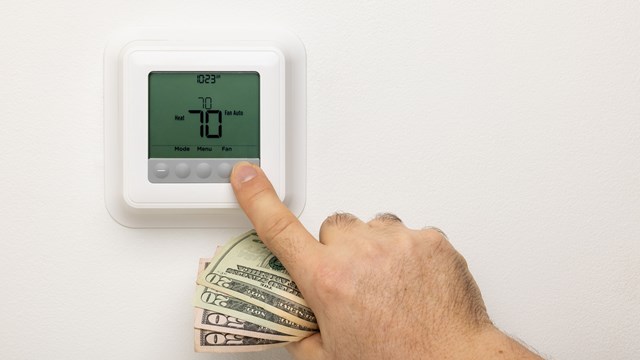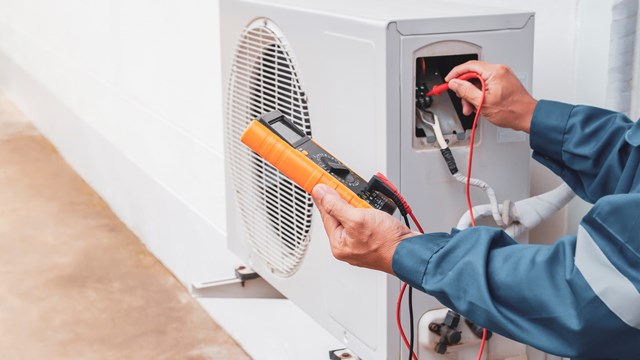
Board members and building managers have a lot on their plates—maintenance issues, resident complaints, construction projects, and the hundred little tasks that make up the administration and upkeep of a multifamily residential building. With all that going on, it's easy to forget or overlook issues that may not necessarily be visible to the naked eye. Something like indoor air quality often doesn't register as a priority until it becomes a problem, and even then it can be tough to pinpoint the root of the issue.
“People don’t consider air quality a priority because there are a lot of other things that you need to worry about in the building,” says Maria Vizzi, president of Indoor Environmental Solutions, Inc. in the Bronx. “Air quality tends not to get the priority that it deserves. That can lead to trouble.”
Sick Buildings?
About two decades ago, the term “sick building syndrome” seemed to pop up regularly in news headlines and broadcasts in the city, as fears about poor air quality in New York’s buildings surfaced from every direction. The term was used to describe a situation in which a building's ventilation system was compromised, leading to health or comfort issues for its occupants. With everything else New Yorkers have to deal with on a daily basis that impacts their health and comfort, the relative “health” of their building is not a topic likely on the mind of many these days.
“'Sick building syndrome' is an old term,” says Gil Cormier, principal consultant for Occupational Risk Control Services, Inc., an indoor air quality investigation service in New Britain, Connecticut. “No one really uses it anymore, especially when you are talking about residential buildings. Now, what you hear is the term ‘Building Related Illness,’ which is something that we can go in and identify what the problem is.”
With a building-related illness, the symptoms are more tied to the building itself, he continues—general assessments are made to discover what the causes are for any symptoms people are experiencing. “Our focus is on what is the source and is it a chemical or biological contaminate,” Cormier says. “If it’s something that is a one-time thing, we are not as concerned, if we can find out what it is and it’s not repeated.”
Becoming Aware
In this decade, the movement toward more environmentally healthy, “green” products and practices has given a big boost to peoples' awareness of sick building syndrome and how to avoid it.
Products and materials that are better for the environment at large are usually better for people too—and many residential buildings are taking steps to make their interior environments healthier.
New LEED Platinum-certified condos at The Visionaire in Manhattan's Battery Park, which are scheduled for occupancy next year, make air quality an important selling point. The building is composed of natural and environmentally safe building materials as well as low VOC paints to ensure that the air in the home is as comfortable and healthy as can be.
“The building will have high-efficiency air filtration systems to optimize indoor air quality and an air humidification system in winter months for the health and comfort of residents,” says Jackie Urgo, senior vice president of The Marketing Directors, the exclusive sales and marketing agent for The Visionaire, one of the newer eco-conscious buildings built by The Albanese Development Corporation. “A four-pipe fan coil system controlled by digital programmable thermostats will provide year-round climate control in each residence. The integrity of the internal environment will also be enhanced through the use of luxury building materials containing no or low volatile organic compounds.”
Other buildings are helping improve air quality with more routine inspections, replacing and cleaning old units and making sure all residents are aware of the danger signs.
Causes & Effects
A myriad of health issues are thought to stem from stale, dusty or mold-contaminated air. Cormier says the first step in fixing any contaminate issue is to identify the source of any problem.
“A lot of times we will get calls from condo owners and get some info on the phone and based upon the symptoms, frequency and severity, we can do an assessment of the problem,” he says. “We’ll ask if there are allergy-type symptoms, if they had water leaks, plumbing or roof leaks—and this helps to guide us.”
There are four things that Cormier looks to discover in any discussion.
“There has to be some sort of contaminant; it could be chemical or biological. Second, there has to be a mechanism of dispersion that makes it become airborne,” he explains. Third, there needs to be a pathway and fourth, it has to be sensitive to people.”
He cites an example of someone spray painting on the fifth floor. “If the odor is noticed on the second floor, it has migrated, so there is a pathway,” he says.
Residents can experience health problems based on the poor quality of the air they are breathing. This air may contain contaminants due to improper airflow from an HVAC system or strong roof fan blowers for the air exchange. That’s why it’s imperative that any issues be looked at, and why many co-op and condo buildings are formulating and implementing maintenance plans that include regular inspections of their HVAC system, as well as periodic duct cleanings to keep allergens and irritants to a minimum.
“HVAC systems in buildings should be inspected annually for dirt and dust as well as bacterial growth,” says Robert Madarasz of Nesconset-based ENVIROspect, Inc., which deals in air duct cleaning throughout New York. “A cleaning schedule should be laid out based on these inspections.”
It’s recommended that all work be completed by a member of National Air Duct Cleaners Association (NADCA) with Certified Air Systems Cleaning Specialists (ASCS) on staff.
Vizzi’s company will lower a video camera from a shaft on the rooftop or a particular line—and there are a number of different outcomes. “With the video system we can see where the problem is,” Vizzi says. “Often times it’s because someone has blocked the vent from renovations or sometimes in new construction the vent just stops and doesn’t continue for some reason.”
While air quality experts focus on measurements, her company looks at calibrations and airflow and determines where the problem is so it can be fixed.
Location, Location, Location
When you live in Manhattan, it doesn’t matter if you are uptown, downtown, or if you live in an old or new building, according to the experts, because any building can be contaminated.
“In prewar buildings they have windows that open which creates plenty of ventilation,” Vizzi says. “With the postwar buildings, people are better educated to know what needs to be done to avoid what they once called sick building syndrome.” She explains that newer buildings have issues because of the way they are so tightly-sealed. With today's energy consumption concerns, which include heating and cooling costs, building materials that provide tight seals have become popular in new designs.
Many issues arise from poor building design and/or inconsistent maintenance, resulting in inadequate ventilation in the building. “Any building can have issues,” Cormier adds. “We have found problems with many buildings in the designs. We are seeing building systems fail and we can predict that on buildings not even built yet.”
“Typically buildings most susceptible to [sick building syndrome] are newer buildings that do not provide adequate ventilation,” says Madarasz. “The need to save energy has led to the construction of the air-tight building, often with windows that do not open. As a result of these new building practices the only ventilation that serves the building are the installed heating and cooling systems.”
Cormier adds that a lot of newer construction is using wood composite materials with a lot of reins and glues in them, which can also cause problems.
Water is Thy Enemy
Mold, bacteria spores, pollen and viruses may be harbored by standing water within the system from condensation leaks or inadequate general maintenance. High moisture content, bird feces, indoor and outdoor effluents can all contaminate the air conditions within the building.
“I would say that 60 to 70 percent of condo problems are moisture related, and it could be tied in with poor ventilation, Cormier says, “With moisture, you have to stop the water, that’s key. A leaky toilet or overflow of plumbing pipe or roof leak can cause moisture and mold and bacteria issues.”
Oftentimes tiles get loose in showers and water may seep into the wall cavity, so it may not only affect the bathroom, but it can affect different floors without people even knowing it. Once there is moisture in the wall cavity, it’s very hard for it to dry and is a conducive environment for mold and bacteria to grow and multiply.
“If there are any water leaks, what we tell co-op and condo owners is to find the source of moisture,” he says. “If you eliminate the moisture you will eliminate most of the biological.”
Listen Up
As any building manager knows, people like to complain, and that is the best way (other than an inspection) to find out about an air quality issue.
If people are complaining about excessive coughing, wheezing, throat and eye irritations, skin irritation, nausea, headaches and fatigue or upper respiratory conditions, this could be a sign that the air quality in their home is not good. All of these symptoms can be the result of poorly ventilated areas, strong odor throughout the building, mold/bacterial spores and viruses.
“We get contacted when property managers get complaints about improper air flow in a building. Mostly when the residents’ quality of life has been altered in some way—smells or smoke, stale air—sometimes they will see the particulates accumulating on the register cover and they will complain about that,” Vizzi says. “Someone may complain that the vent in their bathroom is not pulling the air and it creates mildew or condensation and problems that people start noticing.”
Most buildings have their ventilation systems professionally cleaned every three to five years, depending on the type of activity performed in the building and the concentration of people.
“Often an indoor air specialist company isn't called in until there is a noticeable problem. At that time a specialist may be retained by the building manager/owner,” Madarasz says. “Most call when they need us and are not on a contractual basis.”
The building staff can help make the process easier.
“We have a memo that we provide that they can put on letterhead and put it under the doors or in common areas to let them know the technicians are coming in to clean and sanitize the air ventilation system and need access to apartments on a particular date,” Vizzi says. “That memo is very helpful if they share it with them in plenty of time so it’s not a surprise and it’s a smooth process for everyone.”
Keith Loria is a freelance writer and a frequent contributor to The Cooperator.









3 Comments
Leave a Comment